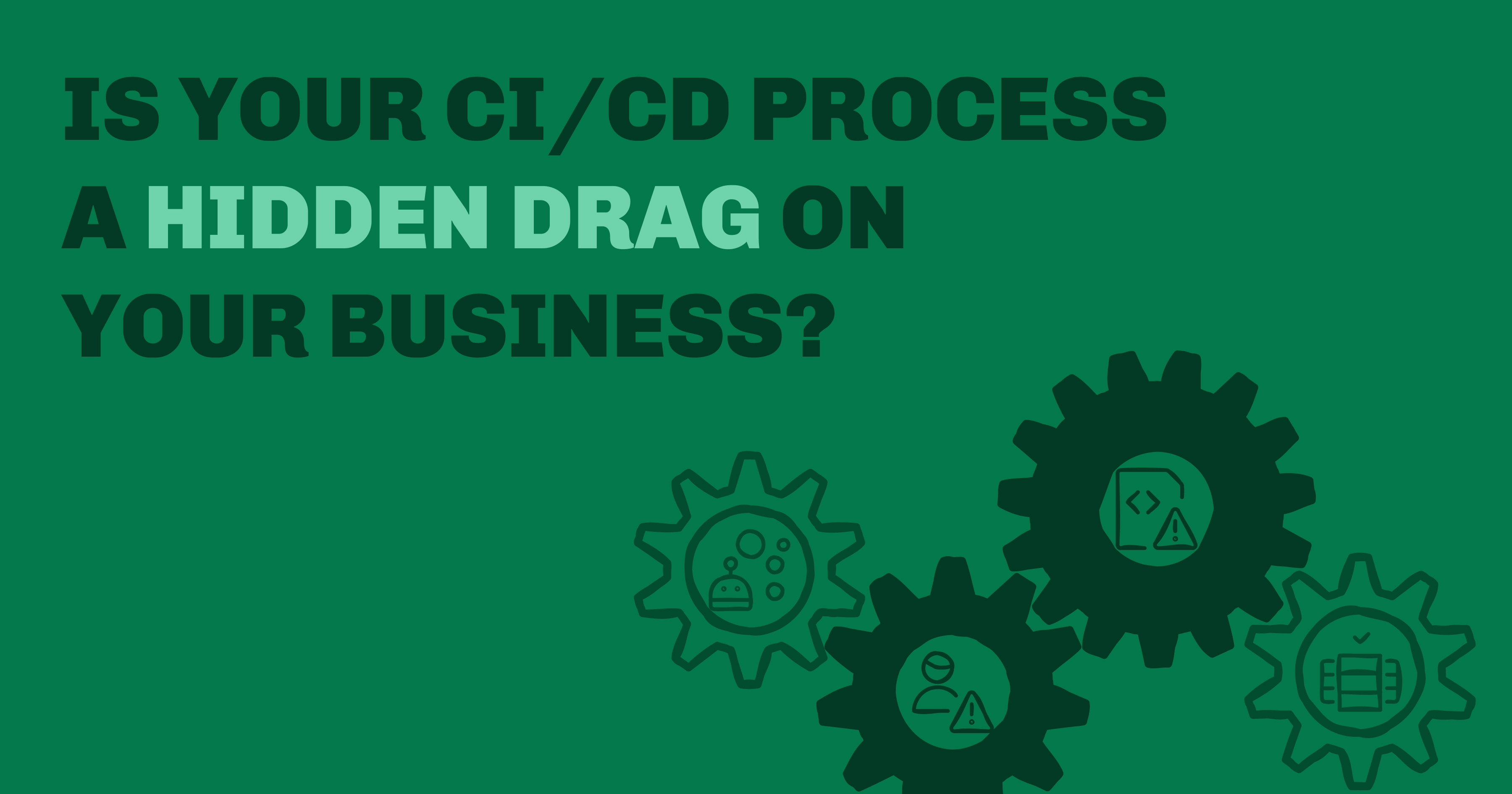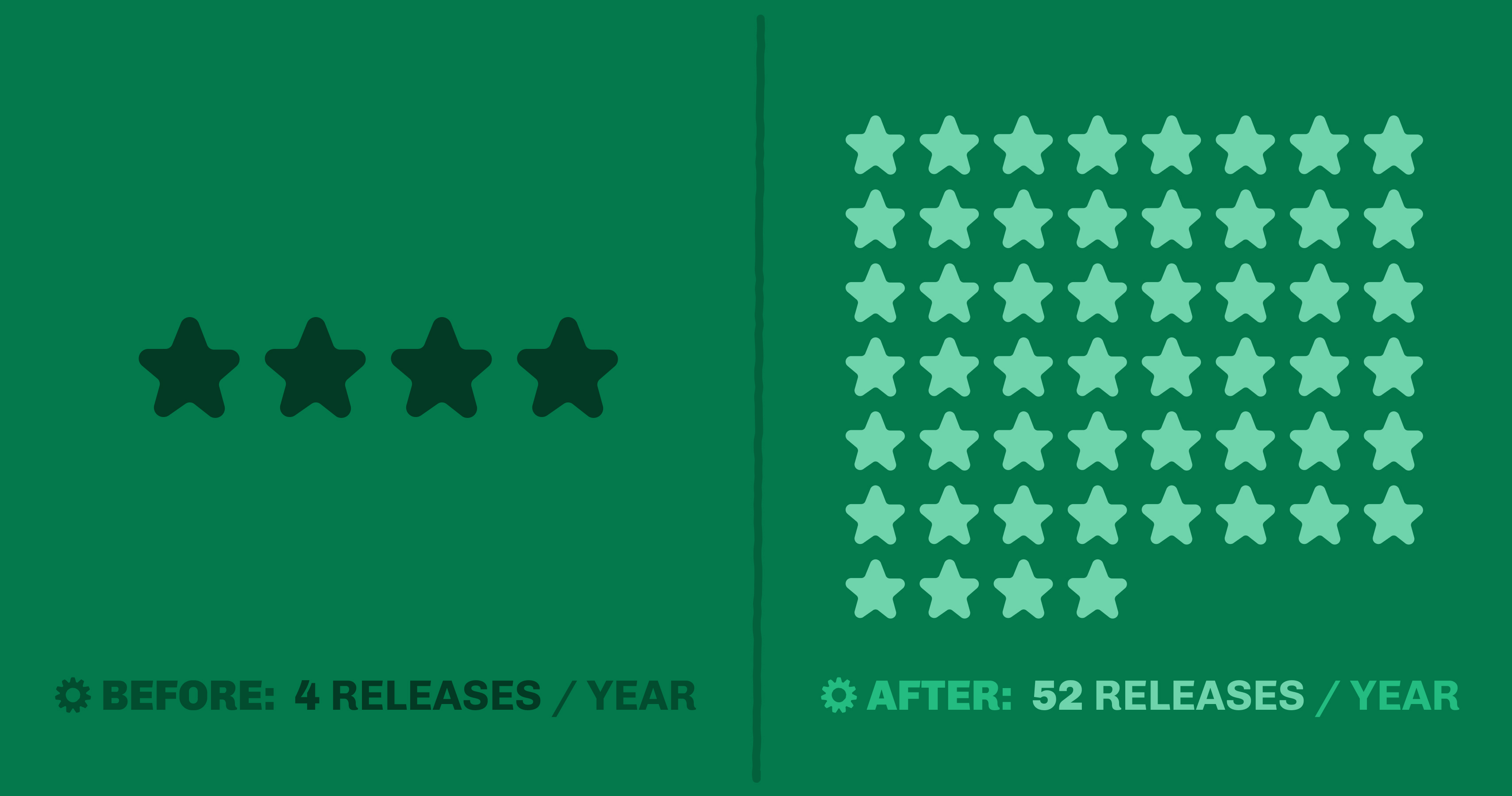
For mid-market and enterprise-level companies, your code delivery is your digital supply chain. When you have hundreds of product teams using disparate tools and ad-hoc processes for delivery, it's like a global logistics operation where every regional office uses different vendors, incompatible paperwork, and a unique shipping schedule. The inevitable result is massive cost inefficiency, constant bottlenecks, and an unreliable final product.
Your software is your product, and its delivery should be a predictable, streamlined engine. Yet, many organizations are running on a fragile, fragmented system that’s costing them market share and exposing them to risk.
Your organization has hundreds of developers using a chaotic mix of coding languages, platforms, and over a dozen security tools that don't talk to each other.
Your CI/CD process isn't a true pipeline – it's a collection of ad-hoc, manual steps, chained makefiles, and random containers that are inconsistent across product teams. Getting a new project onboarded takes weeks or months of manual effort.
Key software components and dependencies are deprecated or outdated, creating thousands of unpatched vulnerabilities and massive exposure to cyberattacks.
Ultimately, an inconsistent and unreliable development process leads to an inability to meet customer needs in a timely fashion, hindering product launches, and ultimately impacting reputation and revenue.
Ignoring a fragmented software delivery process isn't just a technical oversight; it's a financial and competitive high-consequence problem.
Technical debt is the "tax" a company pays to live with existing technology issues. On average, organizations redirect 10-20 percent of their new product IT budget to resolving issues related to technical debt. This means money intended for innovation is constantly diverted to firefighting.
When security checks are manual and pipelines are inconsistent, simple deployment tasks become complex, time-consuming hurdles. Gartner predicts that organizations that actively manage and reduce technical debt can achieve at least 50 percent faster service delivery times to the business, underscoring how severely high debt levels hinder delivery speed and erode your ability to compete.
Deprecated and unmaintained software is a self-inflicted cyber risk. Every unpatched dependency or outdated component is a convenient entry point for malicious actors, expanding your attack surface and risking a major security incident.
When every team is building its own "science project," the focus shifts away from delivering customer value toward managing complexity. You can't achieve predictable, repeatable, and secure delivery until you standardize the process itself.
The path to transforming your software delivery lies in shifting from a chaotic, ad-hoc approach to an integrated, automated pipeline-as-a-service model built on three core pillars:
Eliminate inconsistent processes by consolidating all CI/CD onto a single platform (like GitLab or GitHub). Build a modular, automated pipeline that dynamically detects a project’s type (Python, Maven, Helm, etc) and automatically builds, tests, and packages the application based on a set of proven, consistent standards. This moves the onboarding of a new project from days of manual effort to minutes.
Embed security and quality into the pipeline from the very beginning. Implement automated scanning tools (static analysis, dependency checks) and automated dependency management to find and flag vulnerabilities and deprecated packages immediately. This dramatically reduces your exposure window, automatically managing software entropy and keeping your code up-to-date.
The goal of DevOps is to serve the developers. By providing a simple, standardized, and fully automated delivery experience, you take the heavy lifting of infrastructure and compliance off the development team's plate. This frees engineers to focus on high-value, core development work – the actual product features your customers want.
Trility's approach combines deep DevSecOps expertise with a business-driven lens to define a unified plan, implement an Infrastructure as Code (IaC) foundation, and then mentor your teams to own and maintain the new, simplified ecosystem.
For one mid-market client with over 600 developers and more than 70 coding languages, Trility transformed an inconsistent and unreliable software development environment. The results were a foundation for predictable, secure delivery:
By moving to a pipeline-as-a-service model, you can eliminate manual steps and move to deployment more frequently and quickly.

In addition to reducing steps, simplified and automated delivery increases delivery frequency, which means clients experience new features and functionality more frequently – keeping them delighted.

The streamlining and automation of previously manual processes lowers your total cost of ownership.

The chart above shows the drop in cost by percent across 10 different teams from Month 1 to Month 4.
Lastly, by empowering a DevOps team to own the delivery platform, they are able to shift from executing unstandardized requests to proactively guiding development and promoting consistent, reusable patterns. The end result: You achieve a simplified product engineering ecosystem that serves as a solid, auditable foundation for product lines and services, and assurance in its quality, reliability, and security upon commercial launch.
Is a fragmented, ad-hoc delivery system keeping your business from realizing its product goals? It's time to stop paying the tax of technical debt and start focusing your engineering talent on delivering maximum value.
See how we helped a client solve this high-consequence problem.